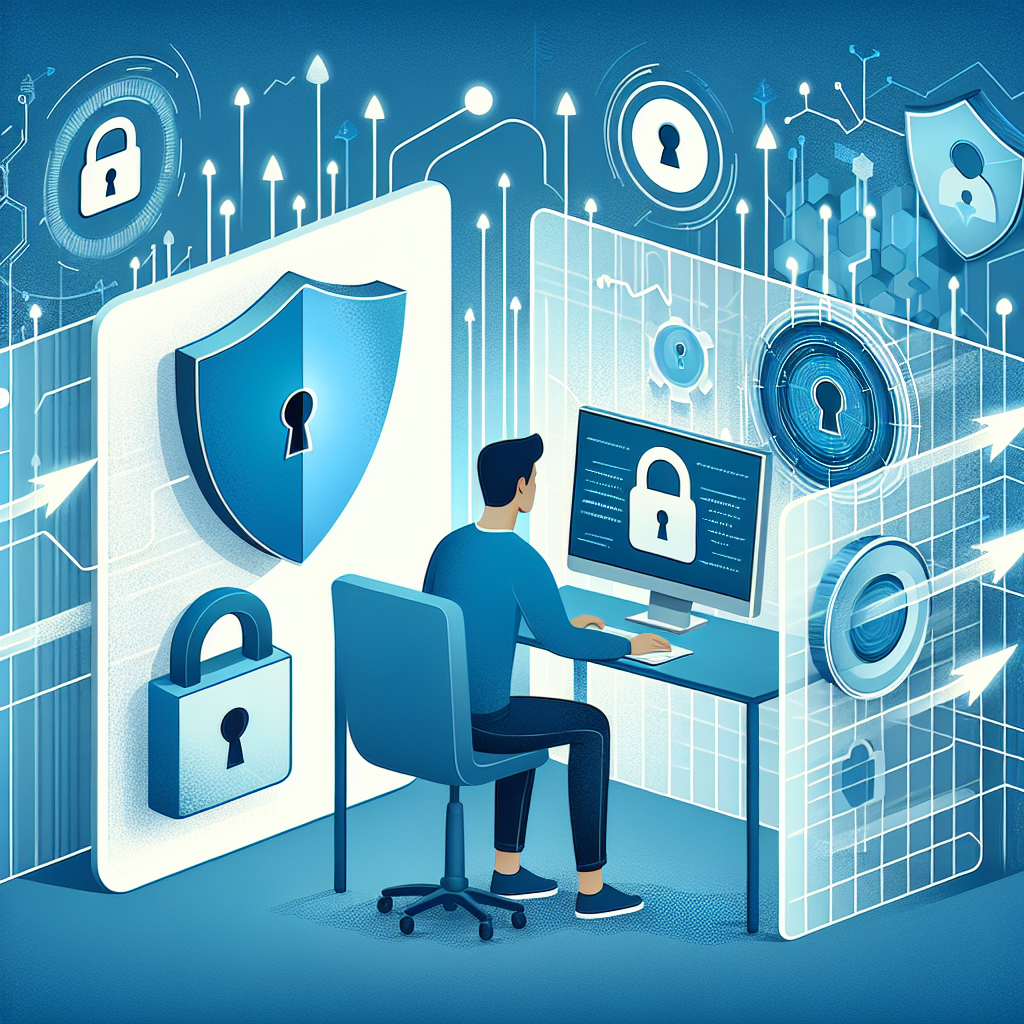Understanding Personal Data Security in Today’s Digital Landscape
In an era where digital transformation shapes our daily lives, protecting personal data has become more crucial than ever. As we navigate through various online platforms and services, our digital footprint continues to expand, making us potentially vulnerable to cyber threats. This comprehensive guide will explore the essential aspects of personal data security and provide actionable strategies to safeguard your information in the digital age.
The Growing Importance of Personal Data Protection
The digital revolution has brought unprecedented convenience to our lives, but it has also introduced new risks to our personal information. With cyber threats evolving at an alarming rate, understanding and implementing robust security measures is no longer optional—it’s a necessity. Recent statistics show that cyber attacks have increased by 300% since the onset of the COVID-19 pandemic, highlighting the urgent need for enhanced personal data protection.
Common Threats to Personal Data Security
- Phishing attacks – Deceptive attempts to steal sensitive information
- Identity theft – Unauthorized use of personal information for fraudulent purposes
- Data breaches – Large-scale exposure of personal information from compromised databases
- Malware infections – Malicious software designed to harvest personal data
- Social engineering – Manipulation techniques used to gain access to private information
Essential Strategies for Protecting Your Personal Data
1. Strong Password Management
Creating and maintaining strong passwords is your first line of defense against unauthorized access. Follow these best practices:
- Use unique passwords for each account
- Implement complex combinations of letters, numbers, and special characters
- Regularly update passwords every 3-6 months
- Consider using a reputable password manager
- Enable two-factor authentication (2FA) whenever possible
2. Secure Network Connections
Your network connection can be a vulnerable point for data breaches. Protect yourself by:
- Using a reliable Virtual Private Network (VPN)
- Avoiding public Wi-Fi networks for sensitive transactions
- Regularly updating your home router’s firmware
- Implementing WPA3 encryption on your wireless network
Advanced Security Measures for Digital Protection
1. Data Encryption
Encryption transforms your data into an unreadable format that can only be decoded with the proper key. Consider these encryption practices:
- Use end-to-end encryption for communications
- Encrypt sensitive files stored on your devices
- Enable full-disk encryption on all your devices
- Verify encryption protocols when using cloud services
2. Regular Security Audits
Conducting regular security audits helps identify and address potential vulnerabilities:
- Review privacy settings on social media accounts
- Check for unauthorized access to your accounts
- Monitor your credit reports for suspicious activity
- Assess the security of connected devices
Digital Hygiene Best Practices
1. Safe Browsing Habits
Develop secure browsing habits to minimize exposure to online threats:
- Use updated browsers with security extensions
- Clear browsing history and cookies regularly
- Avoid clicking on suspicious links
- Verify website security certificates
2. Social Media Privacy
Maintain privacy on social media platforms through these measures:
- Regularly review and update privacy settings
- Limit the personal information you share
- Be selective with friend requests and connections
- Avoid sharing sensitive information publicly
Emerging Technologies and Data Protection
1. Artificial Intelligence and Machine Learning
Modern security solutions leverage AI and ML to provide enhanced protection:
- Behavioral analysis for threat detection
- Automated security responses
- Predictive threat identification
- Advanced pattern recognition
2. Blockchain Technology
Blockchain offers innovative approaches to data security:
- Decentralized data storage
- Immutable record-keeping
- Enhanced privacy controls
- Secure digital identity management
Legal Aspects of Personal Data Protection
Understanding Your Rights
Be aware of your legal rights regarding personal data protection:
- Right to access your personal data
- Right to request data deletion
- Right to data portability
- Right to be informed about data collection
Recovery and Response Plans
1. Data Breach Response
Have a plan ready in case of a data breach:
- Immediate password changes
- Contact relevant authorities
- Monitor accounts for suspicious activity
- Document all incident details
2. Regular Backups
Maintain secure backups of important data:
- Use encrypted backup solutions
- Store backups in multiple locations
- Regular backup testing and verification
- Implement automated backup systems
Future of Personal Data Security
As technology continues to evolve, new challenges and solutions in personal data security will emerge. Stay informed about:
- Quantum computing implications
- Biometric security advancements
- Zero-trust security frameworks
- Privacy-enhancing technologies
Conclusion: Taking Control of Your Digital Security
Personal data security in the digital age requires a proactive approach and continuous vigilance. By implementing the strategies and best practices outlined in this guide, you can significantly reduce your risk of becoming a victim of cyber threats. Remember that security is an ongoing process, not a one-time solution. Stay informed about new threats and security measures, and regularly update your protection strategies to maintain strong digital security.
Key Takeaways for Maintaining Personal Data Security
- Implement strong password policies and use 2FA
- Regularly update security measures and software
- Be cautious with personal information sharing
- Stay informed about emerging threats and solutions
- Maintain regular backups and have response plans ready
By following these guidelines and staying vigilant, you can better protect your personal information in today’s increasingly connected world. Remember that the investment in personal data security today can prevent significant problems and losses in the future.

